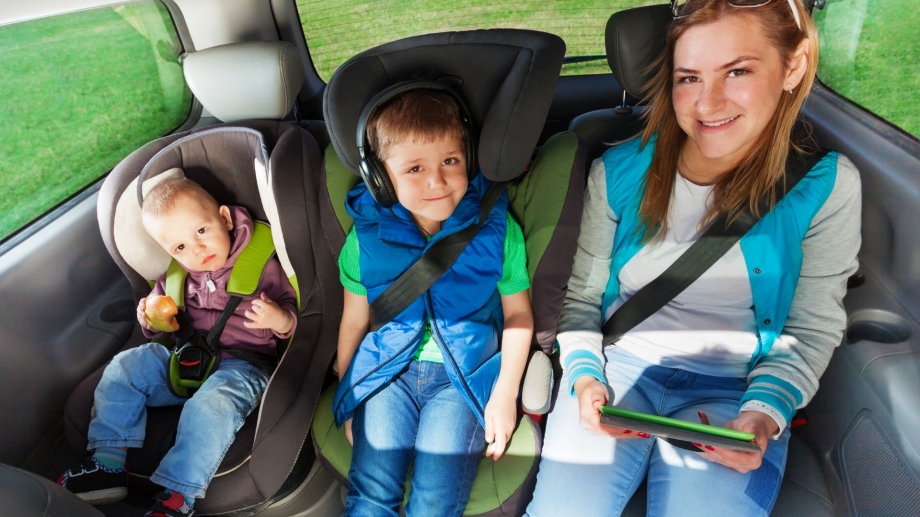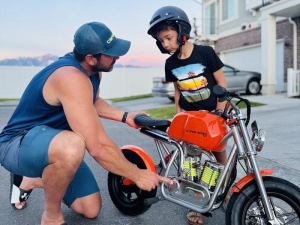Creating the Perfect Journey Experience for Your Little Ones
You know that moment. Your kid's fidgeting, complaining, and twisting in their seat, and you're only twenty minutes into the drive. Sound familiar? Here's the reality: car comfort for kids paired with rock-solid safety doesn't need to feel like choosing between two impossible options.

Today's vehicles come packed with intelligent solutions that accomplish both goals simultaneously. What we're sharing here are battle-tested strategies for building a travel setup where protection and comfort actually reinforce each other, transforming those dreaded family road trips into experiences everyone genuinely enjoys.
Understanding What Young Passengers Really Need
Before you start purchasing products or tweaking features, take a moment to grasp what truly makes children comfortable during vehicle travel. Their requirements diverge radically from adult needs in ways that catch most parents off guard initially.
Age-Specific Comfort Requirements
Each developmental phase demands its own unique approach. According to a national observation survey, 88% of child passengers under age 13 were restrained in 2023. Newborns? They need substantial head and neck support because they can't hold their heads upright independently. Toddlers need adequate leg room while maintaining proper body alignment. School-age children want autonomy without compromising their protection.
Temperature sensitivity shifts dramatically across age groups. Infants can't regulate their body temperature efficiently, making them susceptible to overheating in their restraint systems. Older kids generate considerable heat during activity, requiring better air circulation than you'd initially assume.
How Safety and Comfort Connect
When discussing protection and comfort during travel, infant car seats have evolved impressively in merging safety mechanisms with authentic comfort. Manufacturers finally recognize that an uncomfortable, restless child creates its own safety challenges. Kids who can't settle become distractions for drivers, generating risks nobody needs.
Crash test scores don't paint the complete picture anymore. The best contemporary seats now incorporate memory foam technology, breathable fabric materials, and ergonomic architecture that promotes healthy spinal positioning during extended travel. These aren't premium extras; they're fundamental necessities that make consistent restraint usage achievable for actual families dealing with real-world conditions.
Common Setup Mistakes That Reduce Comfort
Countless parents unintentionally compromise comfort by missing straightforward adjustments. Your harness straps might sit incorrectly for your child's present height, and the recline angle could be wrong now that they've grown. Sometimes, the chest clip positions too high or low, generating pressure points and causing needless discomfort.
Essential Vehicle Features That Make a Real Difference
Having covered fundamentals, let's examine which integrated vehicle capabilities genuinely improve daily experiences. These functional car features for kids convert standard vehicles into family-optimized environments.
Smart Climate Management
Rear-zone temperature controls? Absolute game-changer for family transportation. Children in back seats encounter entirely different conditions than passengers up front. Direct sunlight exposure, diminished airflow, trunk proximity all these factors dramatically influence their comfort thresholds.
Quality sunshades block damaging UV radiation while maintaining reasonable temperatures. Some vehicles now provide ventilated seats even for rear positions, though they remain relatively uncommon. During hospital observations in 2013-14, 91% of child restraint installations for newborns ready for discharge had one or more serious misuses. This underscores how critical proper setup becomes right from day one.
Entertainment Systems Done Right
Screen positioning carries more weight than people typically realize. Badly placed displays force children into awkward neck angles that cause legitimate discomfort over time. Superior systems permit angle modifications and incorporate blue light filtration to safeguard developing vision.
Volume limiters protect young ears while granting older children reasonable independence. You don't want kids blasting audio at harmful levels, yet reasonable control over their listening creates happier passengers during longer journeys.
Storage That Actually Works
Well-organized compartments for snacks and necessities minimize the pandemonium that makes trips exhausting. When everything occupies a designated spot, kids can retrieve what they need without perpetual parental intervention. Wipeable surfaces handle inevitable messes without lasting consequences.
Dedicated toy storage prevents that nightmare scenario where cherished items disappear under seats mid-trip. Straightforward solutions like seatback organizers or console compartments generate surprising improvements in overall comfort.
Must-Have Accessories for Enhanced Comfort
Built-in capabilities provide your foundation, but strategic travel accessories for children complete the equation. These additions target specific comfort requirements that factory equipment can't fully address.
Support Accessories That Help
Head support pillows eliminate that uncomfortable head-bobbing during naps. Various age brackets require distinct styles, which benefits infants that won't suit preschoolers. Body support inserts assist smaller children in fitting correctly in seats engineered to accommodate size ranges.
Anti-slip seat protectors accomplish dual purposes. They safeguard your vehicle's upholstery while preventing that irritating sliding sensation that bothers some children. Nobody enjoys feeling unstable, particularly during turns or sudden stops.
Temperature Regulation Add-Ons
Cooling gel pads make summer journeys tolerable without cranking air conditioning to freezing levels. These straightforward accessories absorb excess warmth where kids contact their seats most directly. Winter trips benefit from heated seat covers that warm quickly without bulky extra clothing layers.
Moisture-wicking seat liners prevent that clammy sensation during warmer seasons. They're especially valuable for children who naturally run warm or following activities like sports events, where kids return already heated.
Designing Your Vehicle Interior for Family Comfort
Thoughtful family car interior design examines how all components function collectively. This isn't about purchasing every available product; it's about constructing a cohesive environment serving your particular family's requirements.
Creating Personal Zones
Each child gains from having their own designated space, even in compact vehicles. This doesn't demand massive SUVs. Simple dividers or strategic toy positioning help kids feel they possess territory that's theirs. Minimizing sibling disputes over space directly enhances everyone's comfort during travel.
Reducing clutter while maintaining essential accessibility demands planning. Rotate toys and activities instead of bringing everything every trip. Children appreciate novelty, and you'll appreciate diminished chaos.
Managing the Acoustic Environment
Road noise impacts children differently from adults. Certain kids find constant humming calming, while others grow irritated by sounds parents scarcely notice. Sound-absorbing materials in strategic locations diminish overall noise without expensive alterations.
Communication systems between rows help parents interact with children without yelling. Being heard initially reduces stress and makes addressing comfort issues considerably simpler during journeys.
Practical Implementation Strategies
Grasping principles matters, but let's discuss actually implementing changes. Most families can't renovate everything immediately, and that's completely acceptable.
Starting with Priority Improvements
Concentrate first on child passenger safety tips that directly tackle your biggest challenges. If temperature generates the most complaints, address climate control initially. When entertainment conflicts dominate trips, handle that system first.
Budget realities matter for every family. Some modifications cost virtually nothing, such as properly adjusting existing equipment, reorganizing storage, or shifting trip timing to match sleep schedules. Others require investment, so prioritize based on usage frequency and comfort impact.
Adapting to Growing Children
Regular reevaluation prevents issues before they emerge. Every few months, verify whether current configurations still work for your children's evolving sizes and requirements. What delivered perfect comfort half a year ago might now cause unnecessary discomfort.
Equipment upgrades follow predictable schedules, but every child develops at their individual pace. Observe signals that adjustments are necessary rather than adhering rigidly to age-based guidance.
Making Family Travel Work for Everyone
Balancing comfort with functionality isn't about reaching perfection; it's about developing sustainable solutions that work for your specific family. Small, considered modifications often deliver greater improvements than costly overhauls. Remember that what comforts one child might not benefit another, even within identical families.
Begin by tackling your biggest frustration first, then build outward from there. As children mature and need to shift, your approach will evolve accordingly. The families who thrive aren't those with the fanciest configurations; they're the ones who remain flexible and responsive to what their kids actually need during real journeys.
Your Common Questions Answered
How often should I reassess my child's car seat fit and comfort setup?
Examine positioning every 2-3 months during rapid growth phases, typically under five years old. Afterward, seasonal variations (clothing differences) and semi-annual checks suffice. Watch for indicators like shoulder marks or pressure point complaints that signal immediate adjustment requirements.
What temperature should I maintain for young passengers?
Target 68-72°F in rear seating zones, slightly cooler than many adults favor. Children generate additional heat in car seats due to restricted airflow and contact with seat materials. Periodically feel your child's back or neck; these zones reveal overheating better than checking hands.
Can I modify my child's car seat with aftermarket comfort accessories?
Never incorporate products not approved by the car seat manufacturer, as they can compromise safety functions. Utilize only accessories specifically engineered for your seat model. When uncertain, consult certified technicians who can suggest safe comfort enhancements that don't jeopardize protection.






